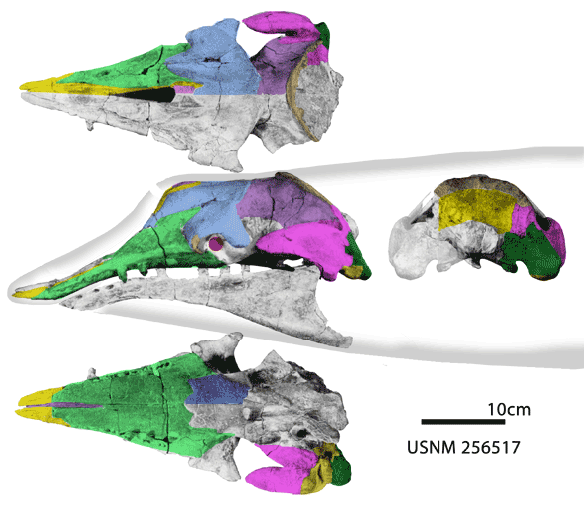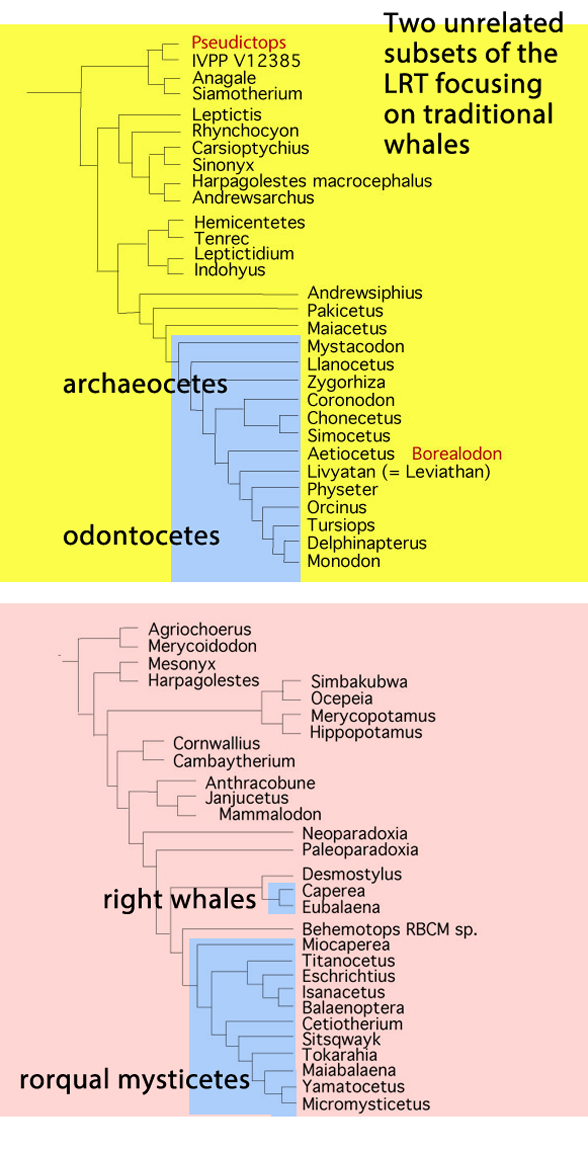Fordyce 2002 described
Simocetus rayi (Fig. 1) as a small archaic ‘dolphin’ from the upper Oligocene of Oregon “with features consistent with a basal position among the odontocetes.”

Phylylogenetic analysis
Simocetus rayi (Fordyce 2002; Fig. 1) nests with Chonecetus (Fig. 2) in the the large reptile tree (LRT, 1878+ taxa) as an archaeocete dolphin mimic. Distinct from Chonecetus, Simocetus had a domed head below the naris, along with a toothless premaxilla and some laterally oriented maxillary teeth (Fig. 1). The coronoid process of the dentary, normally large in mammals and toothed whales, was absent in Simocetus.

While similar in size to the extant bottlenose dolphin
(Tursiops truncatus, 2-3m in length). Simiocetus was “too specialized… particularly in terms of feeding aparatus, to have been directly ancestral to any other described odontocete.” Fordyce realized.

Fordyce 2002 reported,
“the morphology and relationships of archaic odontocetes—heterodont dolphins that retain an intertemporal constriction—are understood poorly. The so-called primitive odontocetes have
nonetheless been pivotal in helping develop basic concepts of odontocete evolution.” Note the early appearance of large extant odontocetes and the later appearance of small extant odontocetes in the LRT (Fig. 3), apparently derived from large odontocetes. So dolphins are small killer whales. Hmmm.
Unfortunately
Fordyce 2002 did not include Chonecetus and Coronodon in his analysis, which nested Simocetus derived from the archaeocetes Zygorhiza and Archaeodelphis, basal to all other odontocetes, which matches the LRT (sans the above exceptions).
References
Fordyce RE 2002. Simocetus rayi (Odontoceti: Simocetidae, New Family): A bizarre new archaic Oligocene dolphin from the Eastern North Pacific. Pp. 185–222 In Emry, RJ (ed), Cenozoic Mammals of Land and Sea: Tributes to the career of Clayton E. Ray. Smithsonian Contributions to Paleobiology 93.
